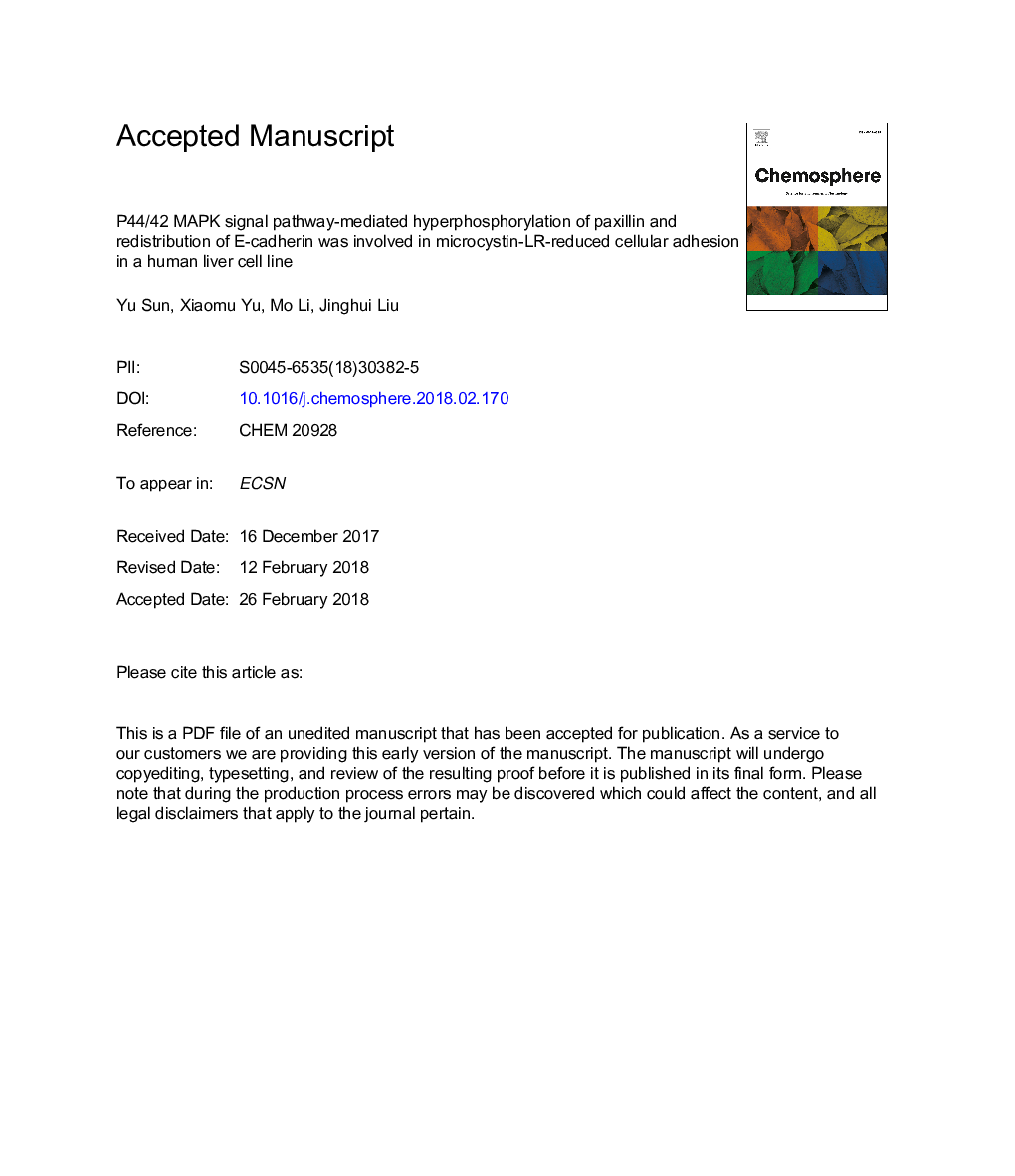| کد مقاله | کد نشریه | سال انتشار | مقاله انگلیسی | نسخه تمام متن |
|---|---|---|---|---|
| 8851753 | 1618771 | 2018 | 36 صفحه PDF | دانلود رایگان |
عنوان انگلیسی مقاله ISI
P44/42 MAPK signal pathway-mediated hyperphosphorylation of paxillin and redistribution of E-cadherin was involved in microcystin-LR-reduced cellular adhesion in a human liver cell line
دانلود مقاله + سفارش ترجمه
دانلود مقاله ISI انگلیسی
رایگان برای ایرانیان
کلمات کلیدی
موضوعات مرتبط
علوم زیستی و بیوفناوری
علوم محیط زیست
شیمی زیست محیطی
پیش نمایش صفحه اول مقاله

چکیده انگلیسی
Microcystin-LR (MC-LR) is the most common and toxic variant of microcystins. We hypothesize that p44/42 MAPK (ERK1/2) signal pathway is involved in MC-LR-induced cell adhesion alteration in a human liver cell line-HL7702. We identified that MC-LR constantly activated MEK1/2-ERK1/2 signal pathway for 24â¯h, 48â¯h and 72â¯h in vitro. MC-LR reduced hepatocytes adhesion efficiency. Furthermore, as the focal adhesion biomarker, hyperphosphorylation of paxillin (ser83) was induced by MC-LR, which can be blocked by ERK1/2 pathway inhibitor (U0126) and was enhanced after hepatocytes transfected with pCMV6-MAPK plasmid. E-cadherin, as a biomarker which reflects the dynamic of cell-cell adhesion, its redistribution in hepatocytes was induced by MC-LR, and these redistribution and colocalization can be attenuated by U0126. Furthermore, MC-LR increased the co-localization efficiency of p-ERK1/2 with E-cadherin and paxillin. Finally, MC-LR-induced adhesive alteration of hepatocytes can be blocked by ERK1/2 signal pathway inhibitor. These data suggest ERK1/2-phospho-paxillin (ser83)/E-cadherin axis is involved in MC-LR toxic mechanism, which probably provides adaptive protection against MC-LR-induced hepatocytes adhesion changes.
ناشر
Database: Elsevier - ScienceDirect (ساینس دایرکت)
Journal: Chemosphere - Volume 200, June 2018, Pages 594-602
Journal: Chemosphere - Volume 200, June 2018, Pages 594-602
نویسندگان
Yu Sun, Xiaomu Yu, Mo Li, Jinghui Liu,